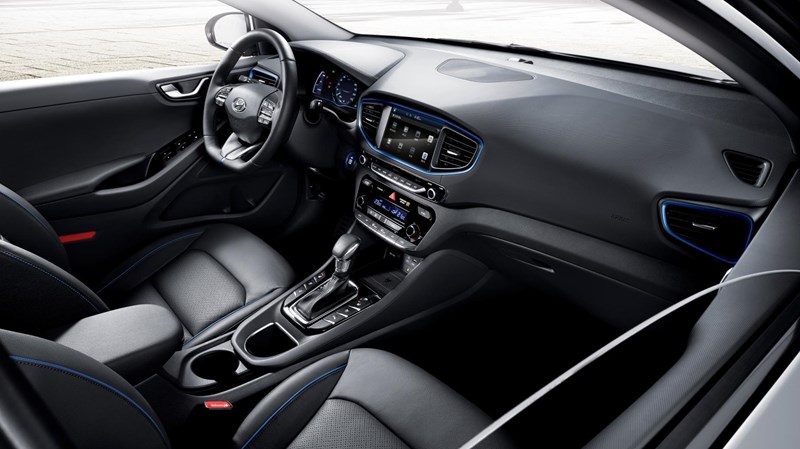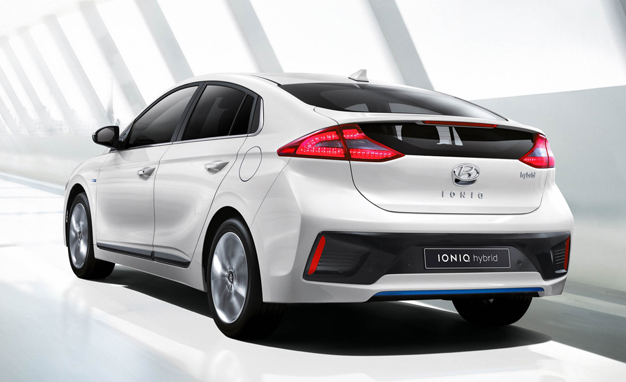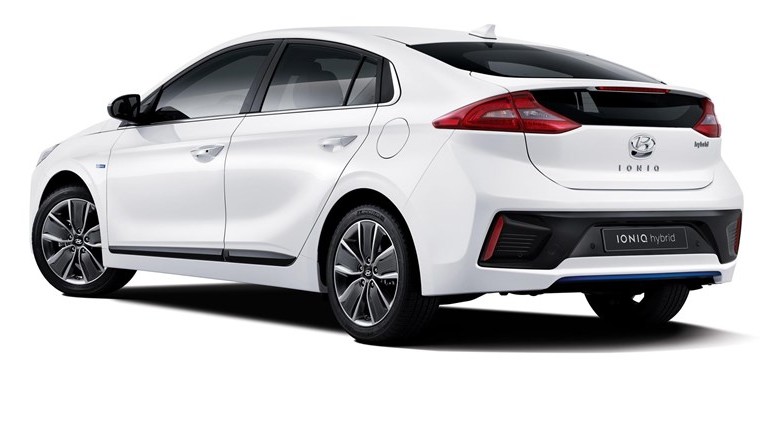Hyundai revealed it’s new model, 2017 Hyundai Ioniq, which will be available as a hybrid, plug-in-hybrid and 100 percent pure electric EV.
Read the first drive review here.
Hyundai Ioniq as direct answer to the new Prius
Hyundai Ioniq is going to be very important car for this Korean brand. It opens the path to the hybrid and EV automotive world. New Ioniq was created on the new platform made by Hyundai and Kia Motors cooperation. It will represent the first car that will offer a choice between hybrid, plug-in-hybrid and pure EV in the same body style. 2017 Hyundai Ioniq replies to the new generation Toyota Prius in the short term, and predicts the further development of Hyundai hybrid and EV cars in the long run.
Hyundai praises the thermal efficiency of the Ioniq hybrid drive

2017 Hyundai Ioniq Interior
Hybrid drive will be composed of Ioniq 1.6-liter GDi petrol engine, capable of 105 horsepower and 108 lb-ft of torque plus an additional permanent-magnet electric motor with 47 horsepower and 125 lb-ft of torque. The battery capacity remains unknown. The battery pack will be located under the rear seats. Hyundai also points out the incredible 40 percent thermal efficiency of a petrol engine. This is the result of improved dual circuit cooling system, cooled exhaust gas recirculation and six-point direct fuel injection system with the pressure of 200 bars. These are almost exact values as of new Toyota Prius (Toyota claims that Prius thermal efficiency will be greater than 40 percent). For comparison, current Toyota Prius thermal efficiency stands at 38.5 percent.
The powertrain details for the EV and plug-in-hybrid power output are for now still a mystery.
Hyundai used a lot of lightweight materials in the manufacture of the new 2017 Hyundai Ioniq. The bonnet, tailgate and some suspension parts are aluminum and a little over half of the body structure is made of high-strength steel. Much attention was paid to aerodynamics and the use of environmentally friendly materials in the interior of the vehicle.
As far as transmission is concerned, Hyundai has chosen a six-speed dual-clutch automatic rather than a CVT. It will send the power of both engines to the front wheels.
We expect more details about other two Ioniq versions at the upcoming motor shows (Geneva, New York).

2017 Hyundai Ioniq EV
Hyundai Ioniq competitors and rivals
- Nissan Leaf
- Chevrolet Bolt EV
- Volkswagen e-Golf
- Opel Ampera
- Toyota Prius
- Citroen C-Zero
- BMW i3
Image credit: Hyundai


Be the first to comment on "2017 Hyundai Ioniq Preview"